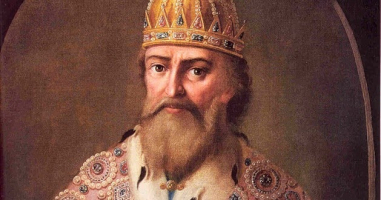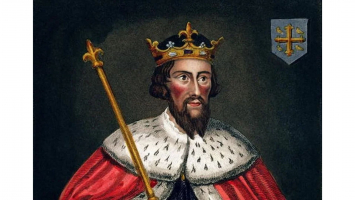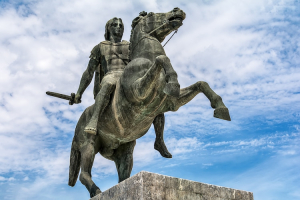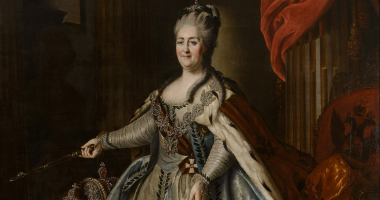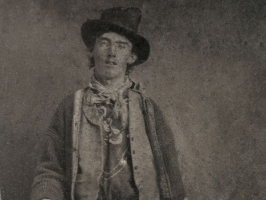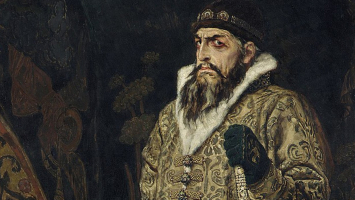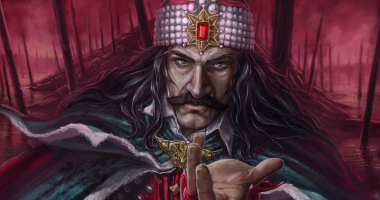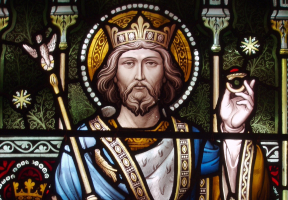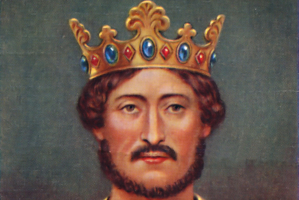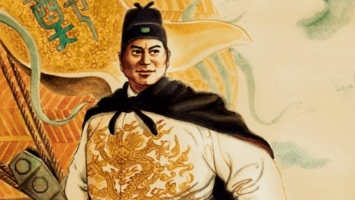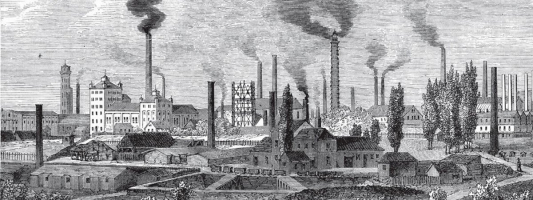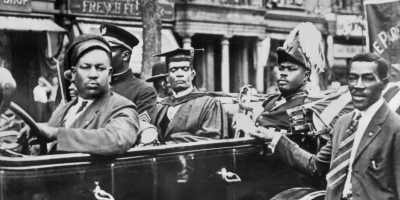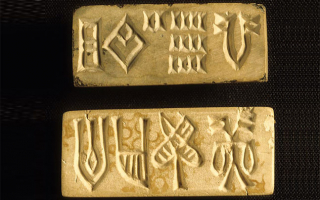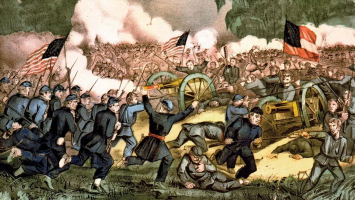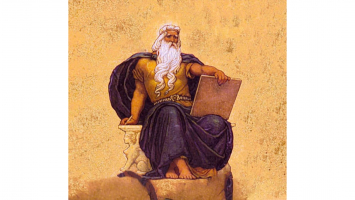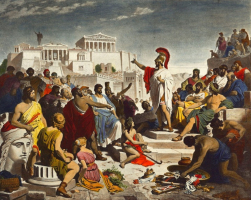Top 8 Interesting Facts about Peter the Great
Exactly 320 years ago, in August 1697, a young tsar Peter I embarked on a two-year journey around Europe. Not being a fan of Russian traditionalism, upon ... read more...returning to his Homeland, Peter began quickly forcing Russia to accept European lines, ignoring any protests or complaints. Peter I, who was later called "the Great" after his death in 1725, was one of the most active and active rulers of Russia. Throughout his life, he experimented with various crafts and skills such as studying engineering, architecture, and shipbuilding. At the same time, he ruled his country with an iron fist. Here are some interesting facts about Peter the Great.
-
Before Peter the Great, the Russian army relied on the militia of the nobility and the elite corps, the elite Russian corps. Streltsy was involved in several uprisings against Peter so he disbanded the group and incorporated its members into the regular army. Peter reorganized the Russian army by western standards. While selecting his officers from the nobility, he also brought farmers and townspeople into other ranks. Officers were required to make their men proficient in combat.
By the end of the 17th century, the Russian state was in crisis. One of the reasons for this was the fact that official positions were born - only children of male families could become teenagers and occupy positions of military commanders, and high-ranking or civilian statesmen. Obviously, these people are not always talented or brave. Peter put an end to this, and in a very harsh way. In 1698, Peter executed a lot of guards - former guards of the tsar who tried to overthrow his rule. With this, a lot of high-ranking boyars (who participated in the coup plot) were fired from the service.
In 1701, Peter argued that land could only be owned by those serving the state. Stop serving, and you will be deprived of your lands and serfs. Peter also installed regular squads of the nobility, which helped to register all nobles who could serve in the army or in civic organizations. Finally, Peter demonstrated the appointment of formerly non-nobles to the nobility for military power by making them barons and earls - titles he had applied in Europe. Peter was hereditary to the nobility and stipulated that all nobles must serve from the age of 15. In doing so, Peter created the Russian nobility that built Russia's greatness in the 18th century and beyond.
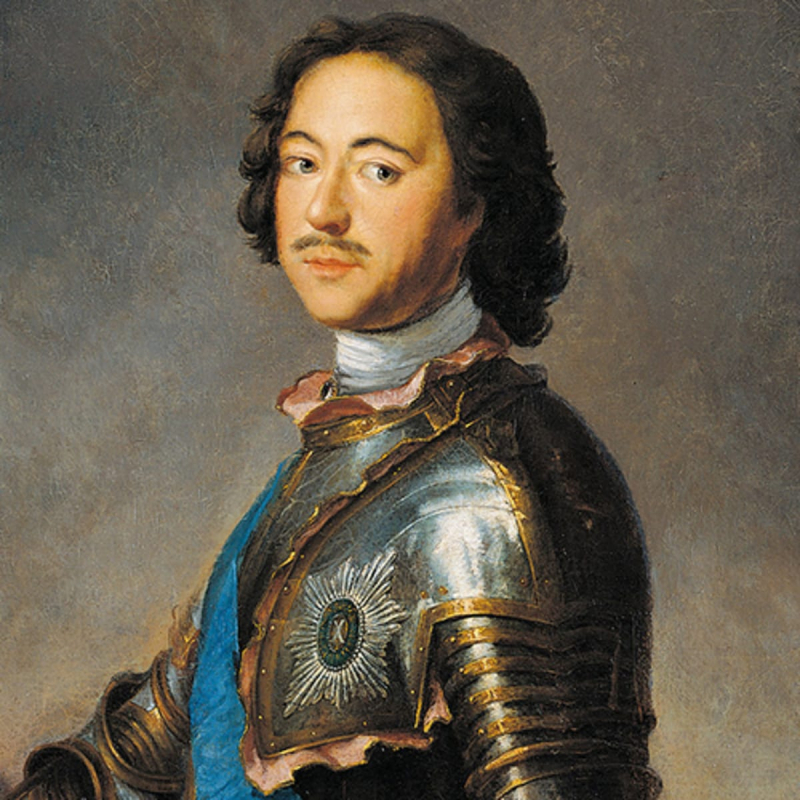
Source: biography 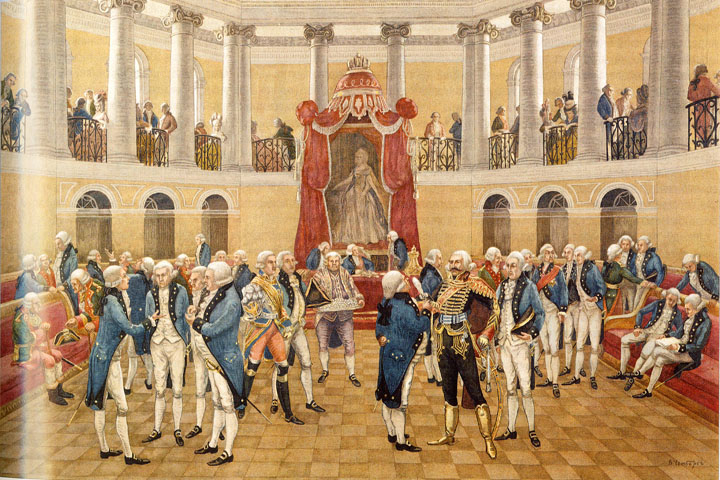
Source: wikipedia -
Most of the formerly wealthy families are located in and around Moscow. Peter understood that he needed a new big city where his new nobles would mingle, compete and create a new social network. At the same time, Russia desperately needs new maritime access and commercial relationships with Europe. On May 16, 1703, while peering through the sparse marshes near the mouth of the Baltic Sea that he had taken from the Swedes, Tsar Peter the Great cut two strips of grass from the island of Hare on the Neva River, placing them to create form a cross and declare: "Let there be a city here."
Built on a hospitable swampland at the cost of thousands of lives, it was shaped by the iron will of Peter, who needed a warm water port and a fortress against the Swedes. Moreover, it was his "window to Europe", a new capital where Peter's Western-inspired reforms to the military, bureaucracy, and national culture would be realized chemical. The founding of St.Petersburg in 1703 on the marshy lands of Ingria (along the southern coast of the Gulf of Finland) was an idea that achieved all of these goals at once. Moscow has not lost its importance as the 'old capital', all the tsars of Russia after Peter were officially crowned in Moscow, in the Dormition Cathedral. But St.Petersburg, as its creator actually planned it, became a European-style city and organized in a European way, helping to achieve another important Peter dynastic goal.
The city plan is based on Amsterdam, with prospects radiating straight from a center, in this case, the Admiralty shipyard, and crisscrossed by canals. Peter's man-made canal system on Vasilyevsky Island was filled up and eventually made into roads, but many of the canals south of the Neva River became the main aquatic lifeline after the city center was moved there. These canals, now bordered by rocky embankments, have earned the city the nickname: "Venice of the North".
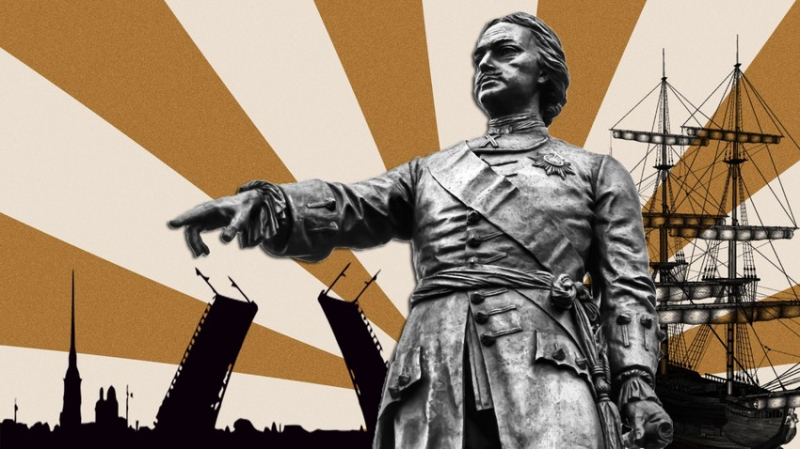
Source: rbth.com 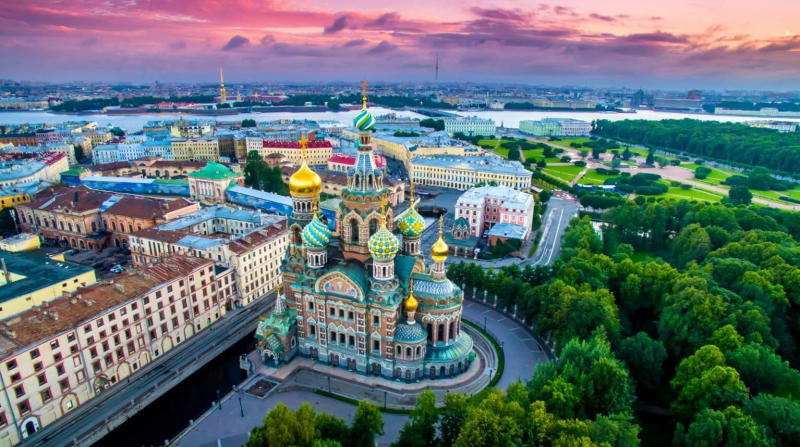
Source: flypgs -
One of the interesting facts about Peter the Great that you may not know. Peter the Great introduced autocracy in Russia and played a major role in introducing his country to the European state system. His visits to the West impressed upon him the notion that European customs were in several respects superior to Russian traditions. Heavily influenced by his advisers from Western Europe, he reorganized the Russian army along modern lines and dreamed of making Russia a maritime power. He also commanded all of his courtiers and officials to wear European clothing and cut off their long beards, causing great upset among boyars, or the feudal elites. Those who sought to retain their beards were required to pay an annual beard tax of one hundred rubles.
Peter understands that to help Europeans and Russians connect, Russians must first look more 'European' so Russian businessmen, lawyers, and science students don't stand out in European cities. Europe with their costumes. So Peter ordered all citizens to wear European-style clothes. Peter also flooded Russia with foreigners coming to the country to work such as building ships, serving in the army, teaching science, and organizing business enterprises, factories and factories. At the same time, Peter sent a lot of Russians abroad to study, as he himself did in 1697-1698. But Peter didn't just make European friends, he challenged the most powerful European nation at the time, Sweden, in the Great Northern War.
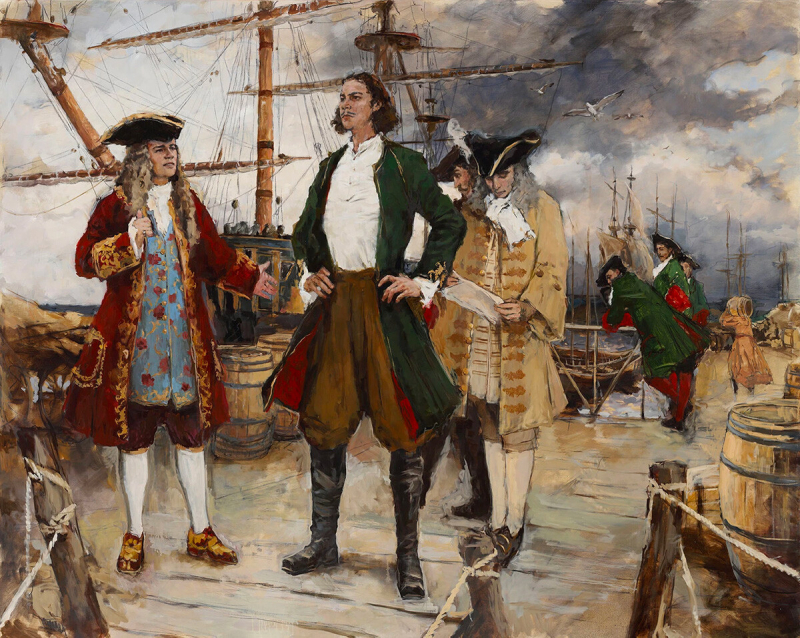
Source: rbth.com 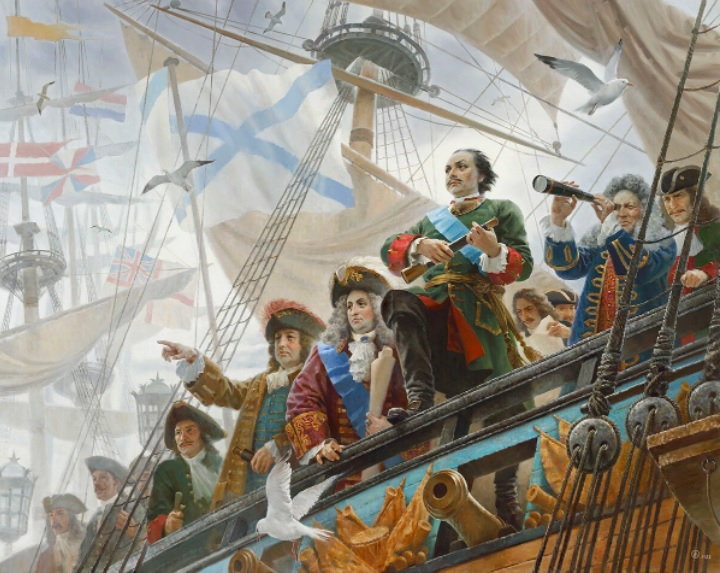
Source: rbth.com -
During the Great Northern War (1700-1721), Sweden opposed an alliance that included Russia, the Polish Commonwealth, Saxony, and the Kingdom of Denmark-Norway. The conflict revolves around control of the Baltic Sea and its shores. During this war, Russia wanted to return its territories in Ingria - these lands belonged to the Tsar of Moscow before the Troubles in the early 17th century. When Peter came to power, Russia had only Arkhangelsk on the Sea. White was its only major trading port, so for the development of naval commerce, access to the Baltic was crucial.
For Russia, the war began with a crushing defeat at Narva on November 19, 1700. The Russians were forced to surrender and lose all their artillery to the Swedes. This battle showed the ineffectiveness of the Russian army. Then Peter launched complete reforms in the Russian army with new military formations, modern weapons, and new battlefield tactics that were used with the help of European commanders and engineers.
In 1704, the Russians finally captured Narva, in 1709 crushed the Swedes at the Battle of Poltava, and in 1714 defeated the Swedish fleet at the Battle of Gangut, Russia's first victory at sea. The war ended effectively in 1718 when the Swedish king Charles XII was killed. Formally, peace between Russia and Sweden was made possible by the Treaty of Nystad (1721), which completed Russia's territorial victory in the Baltic Sea. After the victory over Sweden, Russia declared itself the Russian Empire, and Peter took the title of Emperor. With a reformed military, the country has grown into one of Europe's superpowers. Peter also gives it a contemporary legal system. The successful Northern War made Russia the dominant power in Europe. Peter's 1722–23 Persian campaign ended with Persia ceding the western and southern coasts of the Caspian to Russia in exchange for military aid. Thus, through political finance, talent, and skillful diplomacy, Peter expanded Russia's territory, turning it into a larger empire and a major power in Europe.
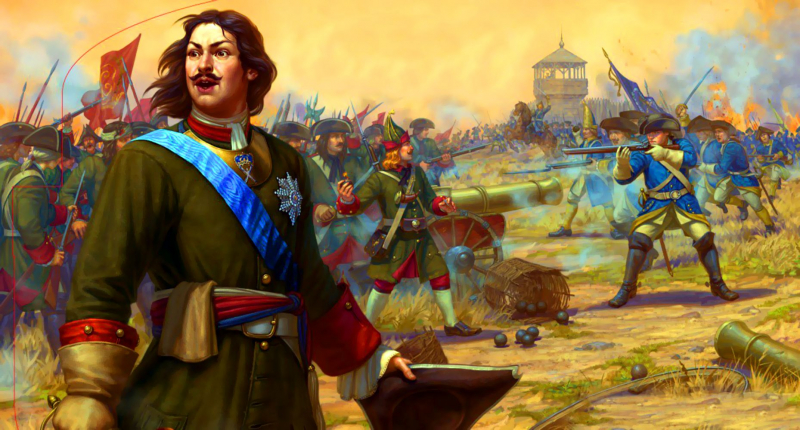
Source: pinterest 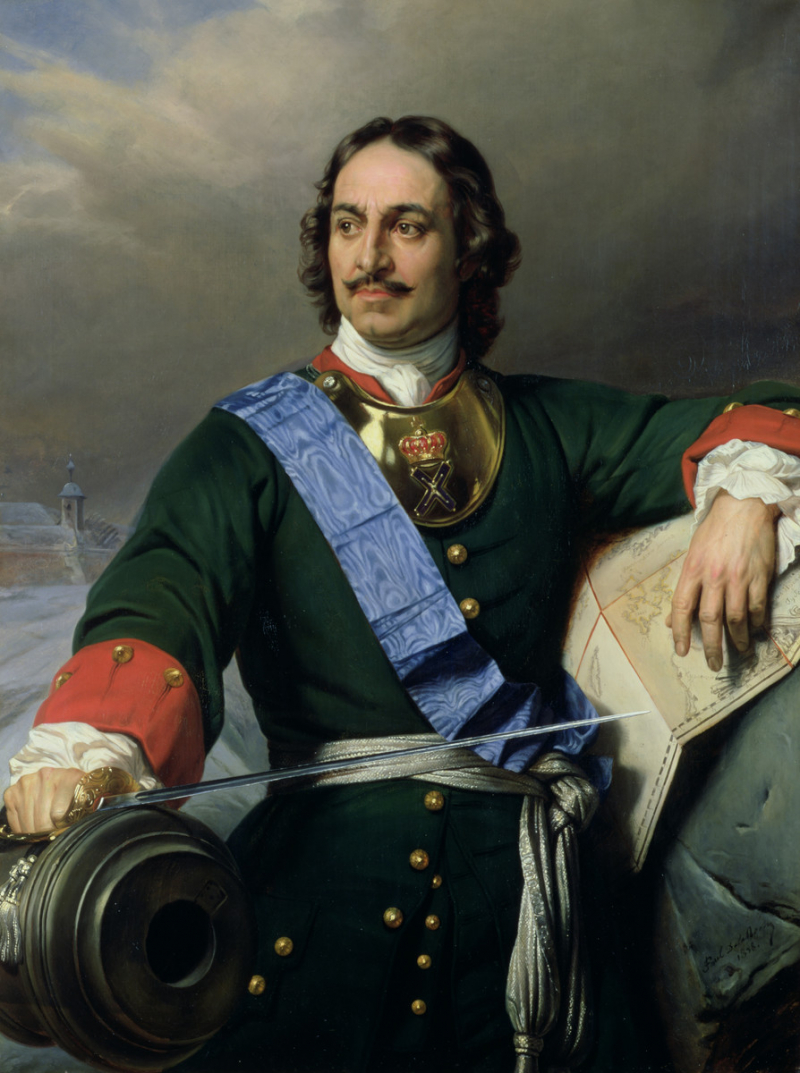
Source: wikipedia -
In addition to his military talent and tactical mind, Peter is also a genius at law. Under his supervision, a new system of state and law was built in Russia. Government is now represented in the Colleges - the forerunners of Ministries; The dominant Senate serves as the highest judicial body (after the Emperor). The power of the Russian Orthodox church under Peter was subjugated to the state - the Pontifical Council of Governors established in 1721 acted as a 'lay' authority of the church, replacing it because it was run by the Patriarch, a position that Peter dismissed. Peter personally issued numerous ukases (orders) that often dictated the details of Russian everyday life - not just beards, but also dress style and public codes of conduct.
Peter ordered Russian women to stop painting their teeth black with soot, taught people to bury garbage in specially organized places, ordered them to use scythes instead of sickles when harvesting, and so on. Peter looks at the fabric of life - and modifies it according to his ideas. His reforms effectively shaped Russia and remained largely in effect until 1917. Peter also introduced critical social reform. He sought to end arranged marriages, which were the norm among the Russian nobility, seeing the practice as barbaric and leading to domestic violence. In 1699, he changed the date of the celebration of the new year from September 1 to January 1. Traditionally, the years were reckoned from the purported creation of the world, but after Peter’s reforms, they were to be counted from the birth of Christ. Thus, in the year 7207 of the old Russian calendar, Peter proclaimed that the Julian Calendar was in effect and the year 1700.
Peter's reforms set him apart from the tsars that preceded him. In Muscovite Russia, state functions were mostly limited to military defense, tax collection, and the enforcement of class divisions. In contrast, the law under Peter's rule covers every aspect of life in Russia in full detail and it significantly affects the daily life of almost every Russian citizen. The success of the reform contributed a lot to Russia's military success as well as an increase in revenue and productivity. More importantly, Peter created a state that legitimized and strengthened the dictatorship in Russia. Proof of this lasting influence is the many public organizations in the Soviet Union and the Russian Federation, which have their roots in Peter's rule.
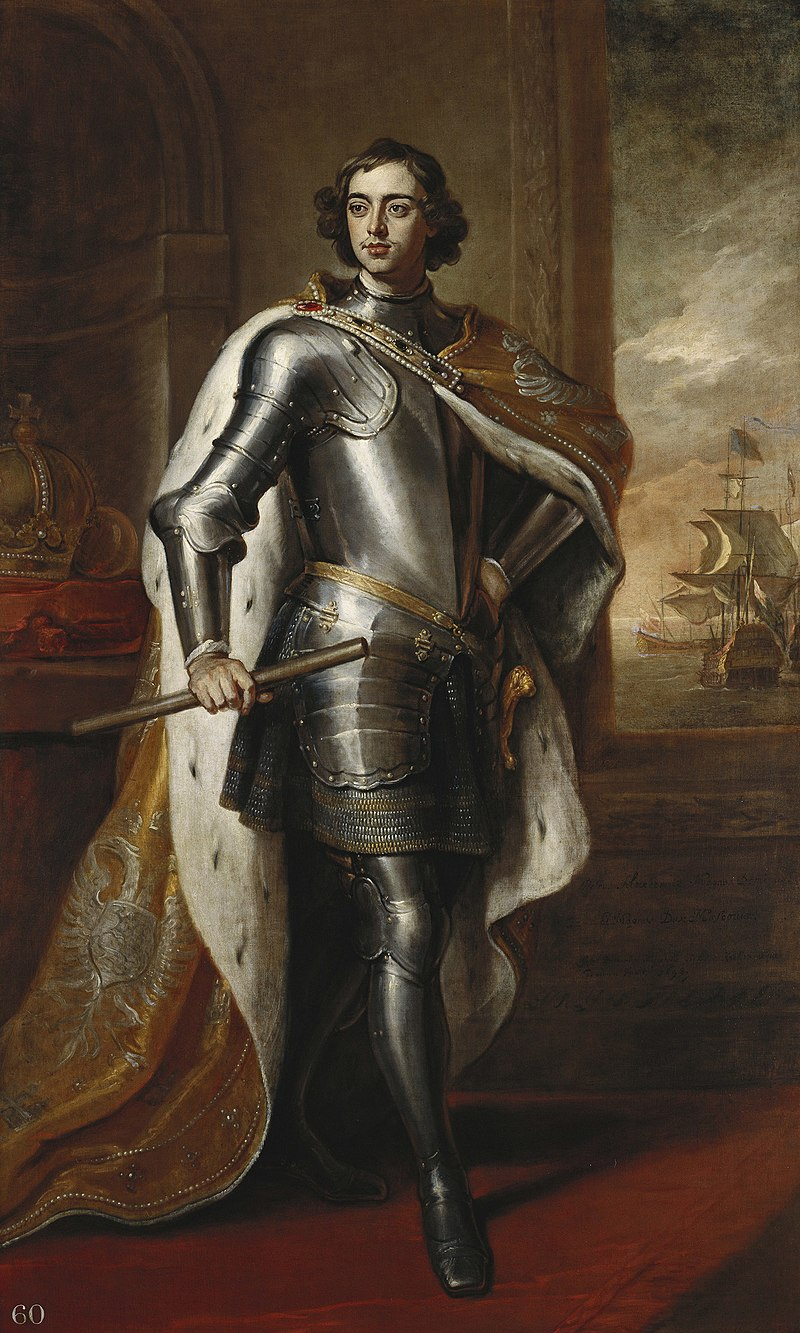
Source: saint-petersburg.com 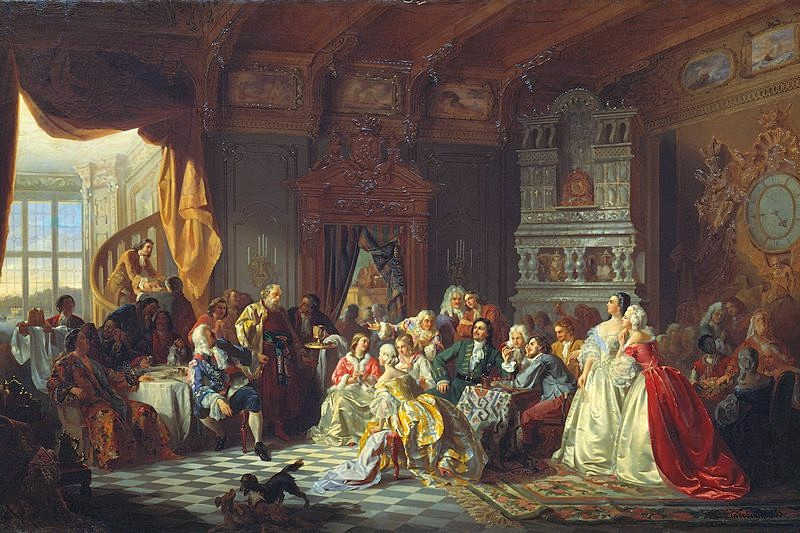
Source: saint-petersburg.com -
This is one of the interesting facts about Peter the Great. Not many people realize that Russia occupies 1/6 of the land area on Earth. It stretches from the edge of Western Europe, down to the Caspian Sea, north to the Arctic Sea, and across the steppe to Vladivostok on the Pacific coast. However, this huge country is almost landlocked. For centuries, the Mongols ruled the only warm-water port in Russia, the Black Sea, so Russia never developed a navy. Even before traveling to the West, Peter was acutely aware that if Russia wanted to develop into a world power, Russia had to have a navy.
The construction of one was at the top of the wish list he brought to the West. While in England, Peter was helped by King William III, who was always eager to improve trade relations with Russia. William gave Peter access to British naval bases, and even gave him a state-of-the-art British ship named the Royal Transport as a gift. He learned more shipbuilding techniques in Amsterdam because the Dutch were a naval power at that time.
Returning to Russia, Peter founded the School of Mathematics and Orientation in 1701 to popularize modern ideas within Russia. At the same time, an accelerated shipbuilding program was carried out, especially in the town of Voronezh in the first decade of the 18th century. Peter the Great founded the Admiralty, which until the beginning of the nineteenth century was in use as a shipyard and where Tsar Peter personally participated in the design and construction of ships for the Baltic Fleet. On the site of the former shipyard now stands a monument to Peter the Great as the "Tsar Carpenter". Because of his achievements, Peter is today known as the father of the Russian Navy.
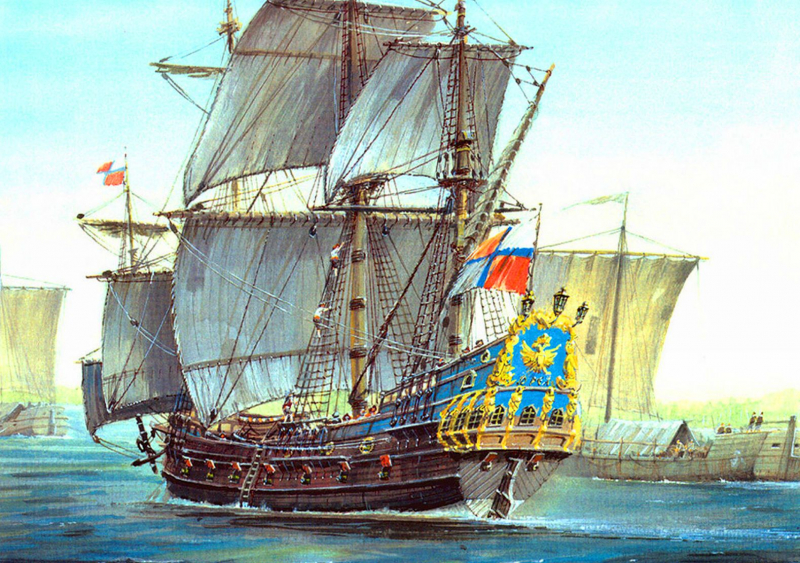
Source: pinterest 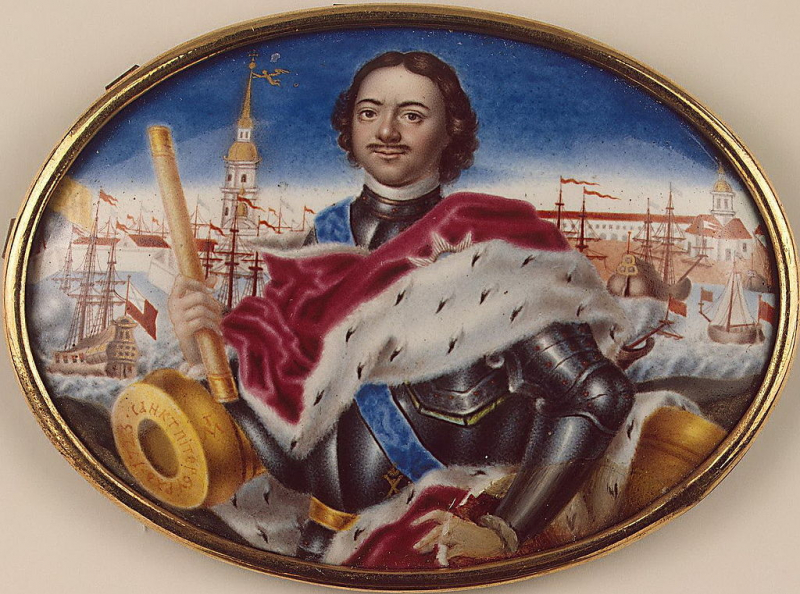
Source: peterburg.center -
Peter through the Western education and way of life introduced in Russia helped to educate farmers about new farming methods and this helped to increase the arable land. This thus helped in the production of raw materials to supply the tsar's nascent industries. For example, in Russia today it is common to see people frying potatoes in sunflower oil. However, perhaps not many Russians know that we do this today because Peter the Great brought back from the Netherlands both potatoes and sunflowers, (they originally came to Europe from the Americas in the 16th century). The tsar foresaw that the Russians could make good use of these, but at first, the people objected.
While farmers pretty quickly understood what to do with sunflowers, potatoes proved a challenge. They were strictly required to grow the tuber but were given no instructions on how to cook and eat it. Instead of consuming potatoes, which they should have done, they tried to eat the inedible and often poisoned potato leaves. In fact, farmers often call it "the devil's apple". But after a while, everyone made peace with this tuber and by the end of the 19th century, it became the "second bread" for the Russian.
He also founded mines and factories that helped industrialize Russia, and these can be said to be the foundation of Russia's mining and manufacturing industries to this day. He was able to balance Russia's central budget after years of deficits and was able to build a solid financial base for his successors. Also by creating about 300 mines, factories, and enterprises, large groups of people were recruited and this gave the people an honest income, and a lot of capital was created for other investments due to the workers must pay income tax.
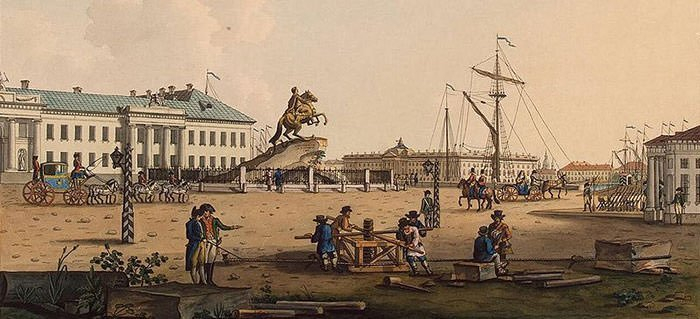
Source: learnodo-newtonic.com 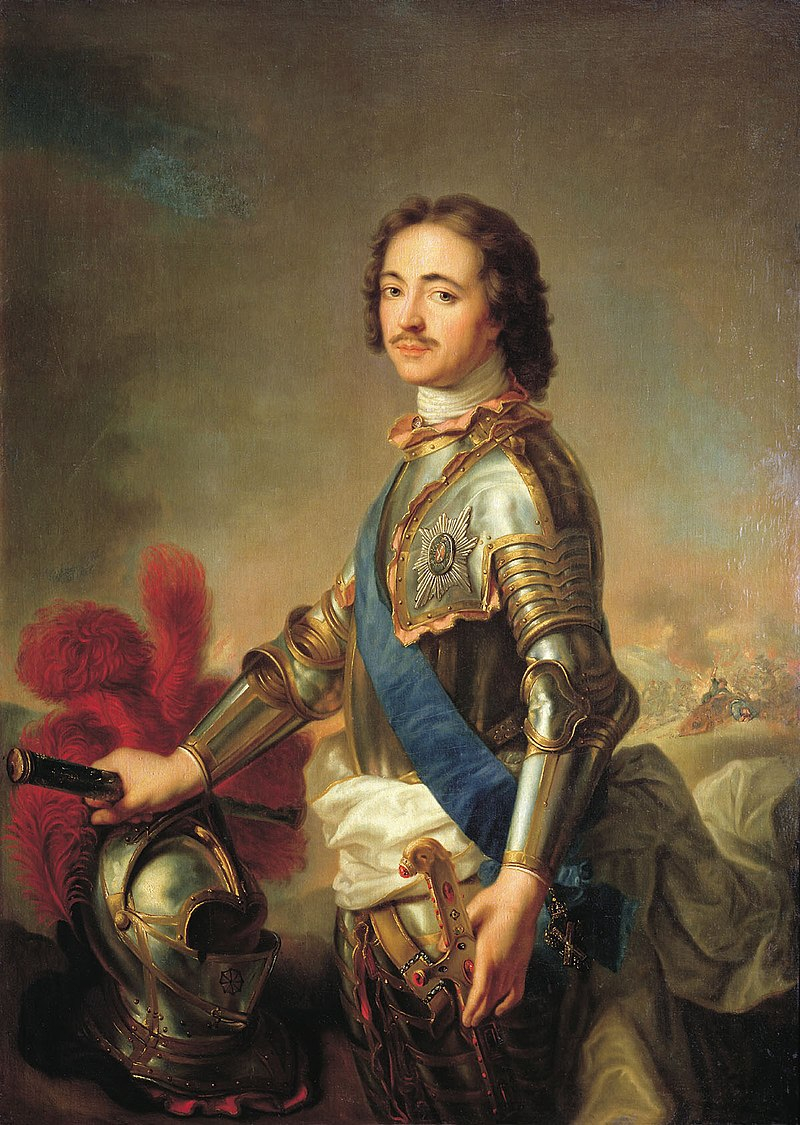
Source: wikipedia -
The reign of Tsar Peter the Great is considered a turning point in Russian history and he is considered the founder of the greatest and most modern Russian leader of all time. He is therefore acknowledged for the political, economic, and social reforms he brought to Russia during his 42-year reign. Despite his remarkable achievements, the human costs involved were enormous since people were mostly serfs working in the construction of factories and cities and his huge taxes were excessive large for most serfs. He also tortured a lot of people who disagreed with his policies and plotted to overthrow him, including his son, whom he tortured and executed, and his sister, whom he has dismembered.
The construction of the city of St. Petersburg took a lot of people's lives. That's why this city is considered a city built of bones. Beginning with the construction of Fort Peter and Paul, Peter engaged thousands of conscripts, prisoners, and prisoners of war to build the city from scratch in a place where snow could fall in early September and late May. Tree trunks must sink into the marshy ground before structures can be supported. Living in ramshackle shacks, working with inadequate tools, and often digging with their hands and carrying dirt in front of their shirts, these involuntary workers have died in the thousands, either by disease or by frequent flooding.
However, this work has become a great work and a symbol of Peter and of Russian innovation. Despite his flaws, his achievements cannot be underestimated as he helped Russia become the dominant power in Europe, reorganized the central government, introduced and improved education, brought Western culture to Russia, established factories, and balanced the central budget by clearing Russia's debt.
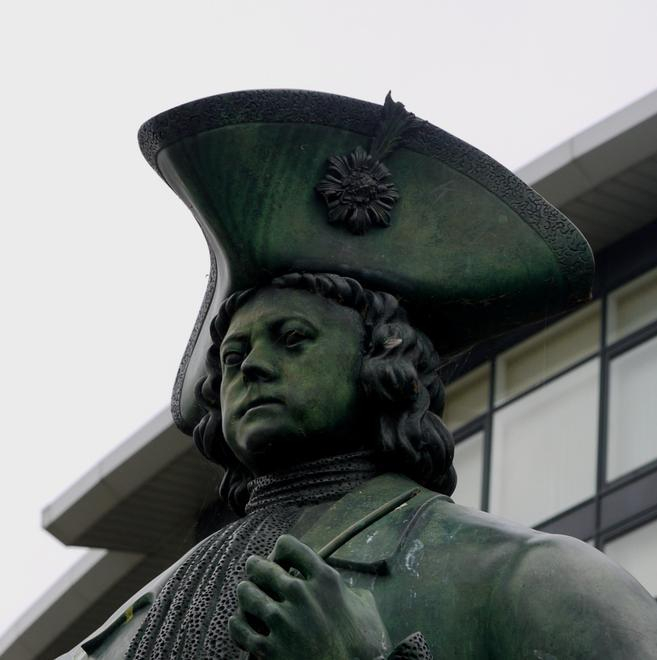
Source: londonremembers 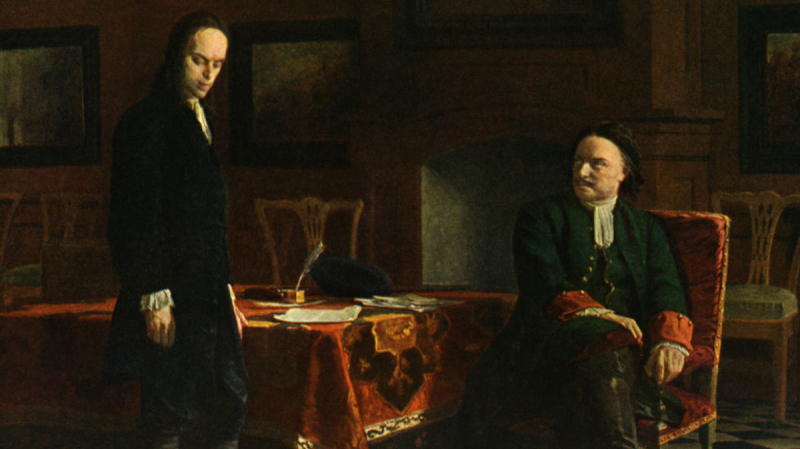
Source: history.com










